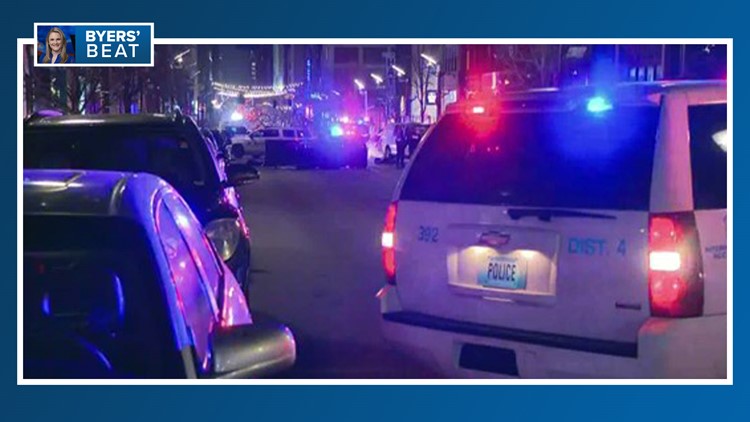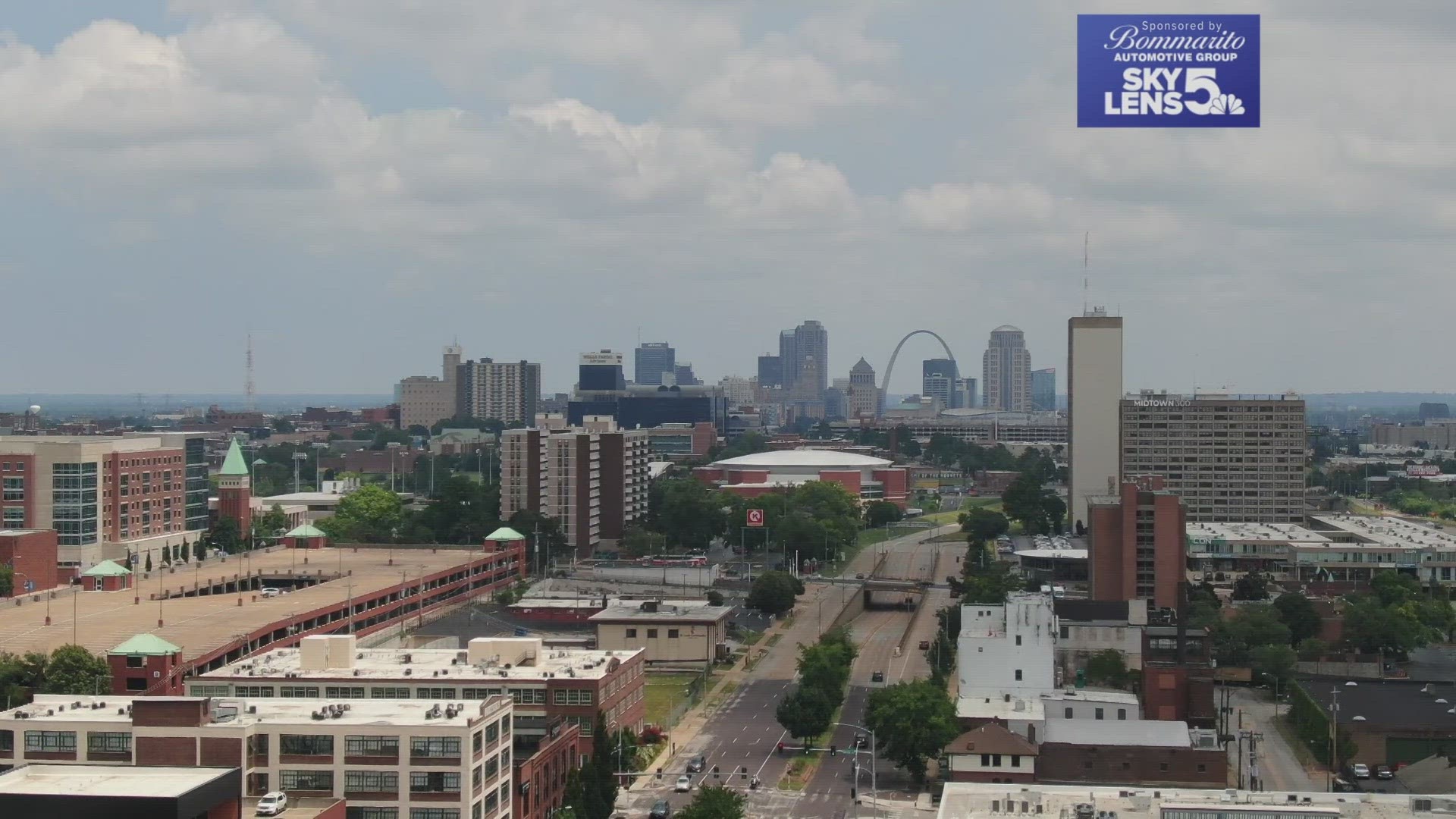ST. LOUIS — During the 11 years I’ve spent covering the police department in St. Louis, officers, commanders and experts have said, “At least it’s not like 1993.”
That year went down in history as the city’s deadliest year on record.
There were 267 homicides.
This week, we learned from 5 On Your Side’s Data Journalist Erin Richey, we are just seven homicides away per capita from another 1993.
And it’s only October.
The grim statistic has officers who've spent enough time on the force to remember the early 1990s and reminisce about the statistic they never thought they’d see again – and the differences between then and now.
One of the first differences they note is how there was a clear enemy during the early 1990s: Crack.
The epidemic was driving most of the violence, which was being committed mostly by warring factions of gangs selling the drug.
One officer recalled how one gang was so vengeful, its members dug up a homicide victim they killed and threw his body on the front porch of another gang member’s home.
“These guys weren’t messing around,” he told me. “It was brutal.”
But, he noted, it was somewhat easy for the police department to identify the gangs – and, so to speak – cut the head off the snake.
The feds kicked in some resources, and the department was able to make some key arrests that helped quiet the violence.
The homicide rate dropped in 1994 and 1995.
This year has some similarities.
The feds are once again kicking in resources.
Missouri Attorney General Eric Schmitt has loaned 10 of his prosecutors to U.S. Attorney Jeff Jensen as part of what he calls the Safer Streets Initiative to prosecute cases quicker and get stiffer federal penalties attached.
Jensen is part of a national effort known as Operation Legend, pumping federal agents into the most violent cities to help boost arrests.
But there are also some key differences.
The enemy isn’t as clear as it was in 1993.
Officers have told me there is some small-scale gang activity – but the gangs aren’t organized like they once were. Drug dealers are in the game for themselves, not for a criminal enterprise with a clear cut leader. Some officers call them individual entrepreneurs.
“These days everybody is killing everybody,” one officer told me.
And everybody has a gun, he added.
The state’s gun laws have changed since 1993.
In Missouri, if a city police officer finds a felon in possession of a gun, it’s a misdemeanor at most.
That’s why the bulk of the cases Schmitt and Jensen’s prosecutors are handling are gun cases – because it’s still a federal crime for a felon to have a gun.
And, in Missouri, you no longer need a permit to carry a gun.
So, you don’t have to sit through classes to learn about gun safety and how to use one before you can own one.
Another stark difference officers have told me about between 1993 and now is the violence against children.
If ever a child was injured in the crossfire, the community – and the gangs – would be outraged.
Phones would ring inside the homicide division with legit tips that led to arrests.
So far this year, 15 children have been killed. And the hospitals are seeing record numbers of children suffering from gunshot wounds.
Many of the cases have gone unsolved.
Many officers blame Circuit Attorney Kimberly Gardner for the lack of charges being issued against those they arrest for some of the crimes.
But Gardner has said police aren’t bringing her enough cases, and her office can’t prosecute cases if it never sees them.
The tension between her and the police is at an all-time high as she continues to add officers to an exclusion list she created of officers she doesn’t trust. They are not allowed to serve as witnesses or bring cases to her office for prosecution.
In 1993, Dee Joyce-Hayes was the circuit attorney.
In a 2017 interview with St. Louis Public Radio, Gardner’s predecessor Jennifer Joyce said she worked for Joyce-Hayes.
“The mindset of the time was that you were dealing or using drugs, you were a danger to our society and you should go away,” Joyce said.
Clarence Harmon was the police chief in 1993.
He once told St. Louis Magazine in 2012 that he reduced crime in Fox Park by 47% in 30 days just by having two uniformed officers sit on the front porch of a drug house.
That’s a hyper-focused form of hot-spot policing if I’ve ever heard of one.
The rank and file have criticized current Chief John Hayden for a lack of a crime plan.
He no longer uses University of Missouri-St. Louis criminologists to study and identify hot spots as well as the strategies that seem to work best inside of them, like having a police presence in 15-minute intervals at specific times of the day.
He has instead adopted several high-crime areas he calls Hayden’s Rectangles, but there hasn’t been much of a reduction in those areas, and experts have said they’re too large of an area to be policed like hot spots should be.
RELATED: The St. Louis Police Chief stands by hot spot policing, despite an increase in homicides in 2019
He also doesn’t appear to be in the trenches based on an email I obtained sent by Lt. Col. Mary Warnecke to the captains of the city’s six police districts. She sent it Monday, following Hayden’s appearance before the Board of Aldermen during the last week of September.
It read, in part, “They raised several questions to him as to what he was doing about crime in several of their particular wards. It was a lengthy and arduous meeting for him. Asking him what he is doing about specific crime initiatives is unreasonable. The aldermen should be reaching out to their particular captains with their specific concerns.”
Hayden is most often seen publicly talking to reporters after another one of his officers has been shot.
That is at an all-time high, too.
The department’s public affairs office tells me 41 officers have been shot at so far this year.
Nine of them have been struck by gunfire.
One retired officer I spoke to recently told me he can’t imagine what it’s like for today’s officers to be out there trying to bring peace to the most violent communities only to be shot at in the process.
Back in the early 1990s, he said officers were treated like royalty whenever they came into violent communities.
“People wanted us to be there,” he said.
Now, he fears, officers who have come after him will someday soon be saying, “At least it’s not like 2020.”



